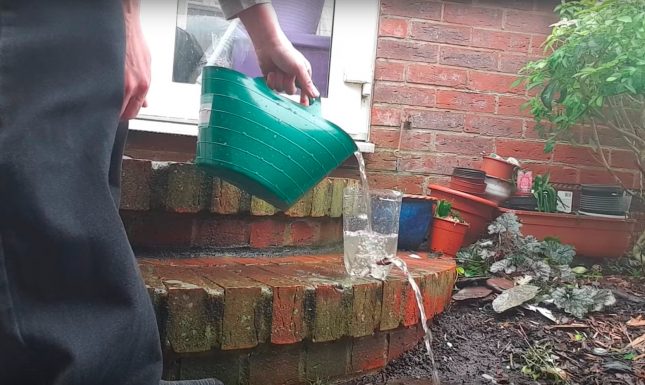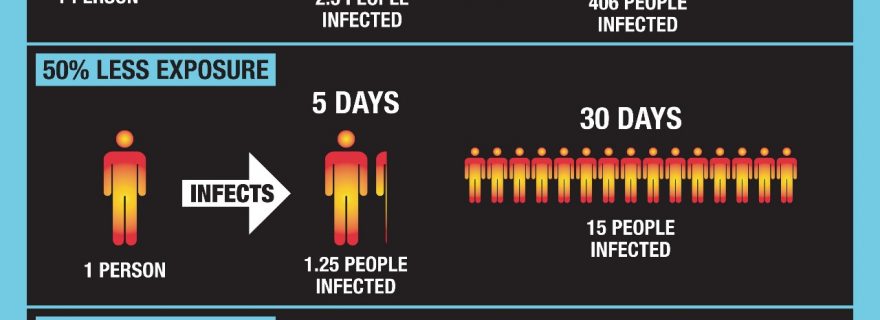Making sense in times of uncertainty: ‘models of’ and ‘models for’ the covid-19 pandemic
The rapid spread of covid-19 creates fear and uncertainty, triggering an acute need for theories built on trusted knowledge. Erik de Maaker reflects on how lay and expert theories influence each other in the Netherlands.
Covid-19 in the Netherlands: different approaches
In the Netherlands, initially the ‘National Institute for Public Health and the Environment’(RIVM) aimed at containing what were presumed to be isolated instances of infection. When the first persons tested positive for covid-19, health workers scrutinized who they had been in contact with, in an attempt to control the virus. Mid-March, the rapid increase in the number of people who tested positive made clear that this approach was no longer viable. The government then took extensive measures to enforce ‘social distancing’, in an attempt to slow down the spread of the virus. How social distancing is meant to accomplish this is exemplified in a graphic posted by Gary Warshaw on Twitter. As a method, social distancing had already proven its worth when the Spanish Flu wreaked havoc across the world, now slightly more than a century ago.
If social distancing reduces the speed by which a virus such as covid-19 spreads, that decreases the number of people who simultaneously require medical treatment. Healthcare systems have a limited ability to provide intensive care hospitalization, even in a ‘well to do’ country such as the Netherlands. Obviously, as long as the strain placed on the health care system remains manageable, mortality will be lower. Yet, social distancingseriously disrupts life as we know it, sharply reducing mobility, trade and consumption. While this may bring temporary relief with respect to global warming, industrial pollution and so on, in the longer run it also creates radical disbalances that threaten the livelihoods of millions of people. What strategies may deliver a return to the kind of non-distanced sociality that we are accustomed to, and at what costs?
‘Models for’ and ‘models of’ the world
Researching the spread, control and treatment of diseases like covid-19 is the terrain of virologists. Common people, myself included, theorize about the spread of the virus and its (possible) consequences as well. We all need to somehow make sense of the world, and develop strategies to cope with the challenges it poses. As an anthropologist, observing these efforts reminds me of Clifford Geertz’ distinction between ‘models for’ and ‘models of’ the world. The medical experts create input to the production of what Geertz, with reference to religious ideas and practices, called ‘models for’ the world.
Rooted in epidemiological research, they provide us with knowledge and theory that allow us to imagine the workings and impact of the virus. By learning, absorbing, but also reconsidering and doubting, ‘models for’ translate into ‘models of’ the world. That is, by interpreting the theories formulated by the epidemiologists, common people create a perception of the phenomena they are confronted with. The contrast between ‘models for’ and ‘models of’ thus creates scope for enquiry into the constitution of knowledge, authority and meaning. How do these three social fields relate with respect to the spread of covid-19?
Social distancing and group immunity
Unlike the approach taken in the People’s Republic of China, South Korea or France, the governments of the Netherlands and the UK have been hesitant to move towards a full ‘lockdown’. While such a lockdown might halt the circulation of the virus, it leaves the majority of the people unprotected if the disease makes a comeback. Many experts therefore argue for a controlled circulation of the virus among the population, to build group immunity (also referred to as ‘herd immunity’).
The Washington post on March 14th published an article that explains how with social distancing group immunity can be achieved and why it is according to the author the best option to come to terms with covid-19. Using animated simulations, the author compares variations in the spread of an hypothetical virus dependent on whether there is no social distancing, a total lockdown, moderate and extensive social distancing. Clearly, these different scenarios suggest, no social distancing results in a rapid spread of the disease, in which at its peak almost the entire population will be ill.
I understood the relationship between building group immunity and social distancing even better when I watched how on Twitter ‘Footman447’ explained it using a bucket of water and a plastic water bottle with a hole. Water poured from the bucket represents the part of the population that contracts the disease. If the level of infection is too high there is an overflow, and the medical system cannot cope. But when the water is only a trickle, it takes forever for sufficient people to fall ill, (mostly) recover, and with their immunity attain the ability to protect others in the ‘herd’. Group immunity is controversial in relation to covid-19, because medical scientists are not yet sure if people who have recovered from the disease cannot be infected again. Viruses can mutate, as happened most likely with the Spanish Flu, which came in at least three waves. More obviously, it is controversial since it requires the virus to continue to circulate. It is an uncomfortable idea that unless a large number of people fall ill (50-60% of a population), group immunity cannot be achieved.
Expertise and everyday theories
Geertz maintained that ‘models for’ and ‘models of’ are conducive to each other. Ordinary people, who try to make sense of the rather sudden threat that covid-19 creates to what appeared to be certainties of life have little choice but to build their ‘models of’ this new reality on the ‘models for’ provided by whoever they trust as experts. At the same time, there is no consensus among experts, who develop distinct and at times contradictory arguments based on the inputs they receive and interpret. In addition, it seems to me that the experts are also influenced by how lay people engage with their theories. Perhaps that explains why the director of the RIVM, who about a week ago made a rather explicit plea for building group immunity, shifted to stating that achieving this “cannot be an aim in itself”. ‘Models of’ and ‘models for’ continue to inform each other, exemplifying how everyday theories make an
essential contribution to any attempts to make sense of the covid-19 pandemic.




0 Comments
Add a comment